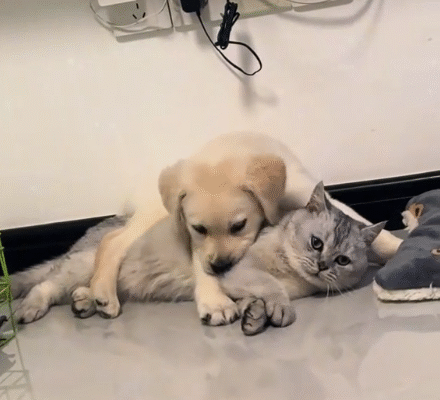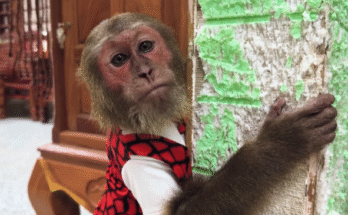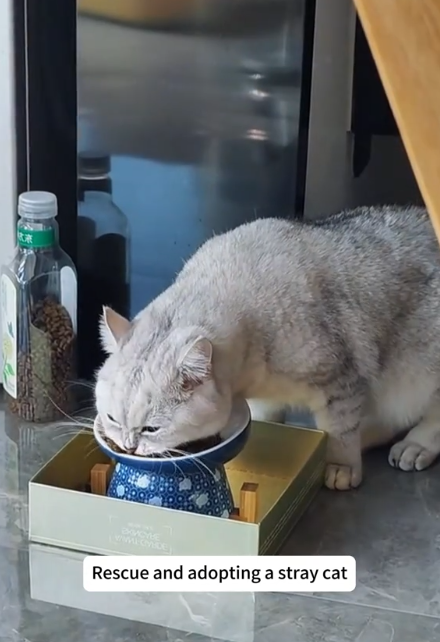
It started with a faint meow. The sound was so soft and timid that I nearly missed it as I walked home one rainy afternoon. I stopped, turned my head, and listened closely. There it was again—a plaintive cry, echoing from beneath a parked car. I crouched down and spotted a small, skinny cat with matted fur and frightened eyes. She looked lost, wet, and hungry. That moment marked the beginning of a beautiful journey—rescuing and adopting a stray cat who would soon become a beloved member of my family.
The First Encounter
The little cat didn’t approach me at first. She was scared, flinching at every move I made. It was obvious she had been through a lot. I didn’t want to frighten her further, so I gently placed some bits of leftover chicken on the ground and stepped back. Hunger eventually overcame fear, and she slowly crept out from under the car to eat. I named her Misty, inspired by the drizzling rain that had introduced us.
That day, I didn’t take her home right away. I gave her food, talked to her softly, and promised I’d be back. And I was—every day for a week, I returned with food and clean water. Slowly, Misty began to trust me. She’d wait for me, walk a little closer each day, and eventually let me touch her head. That’s when I knew it was time to bring her home.
The Rescue
Rescuing a stray cat isn’t as simple as picking it up and walking away. Strays are often cautious, sometimes injured, and may carry diseases. I prepared a cardboard carrier, lined with a soft towel, and brought it with me. Misty had grown comfortable enough to let me pick her up gently and place her in the box without panic.
At home, I created a quiet, warm space in my laundry room. It had food, water, a litter box, and a soft bed. I gave her space to adjust, checking in regularly and speaking to her calmly. She was skittish at first but didn’t hide for long. Within a day, she was exploring her little room, sniffing corners and curling up in the bed I’d made.
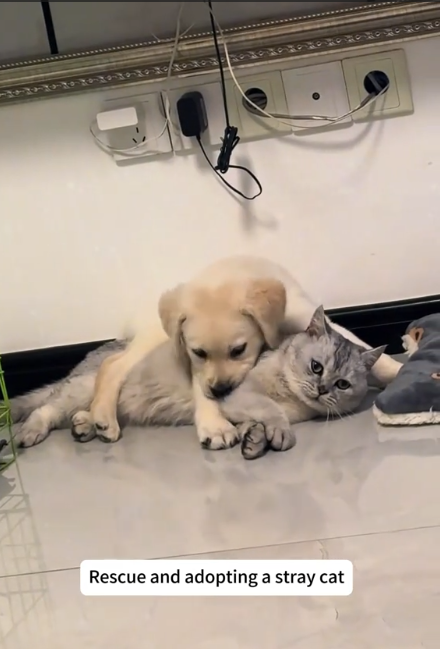
The Vet Visit
The next step was a visit to the veterinarian. It’s crucial to have a stray cat examined for any health issues. Misty was surprisingly healthy, though she had fleas and an ear infection. The vet vaccinated her, treated her ears, and suggested she be spayed soon. We scheduled her surgery, and after a few days of antibiotics, she was already more energetic and playful.
The vet also checked for a microchip—just in case she had a previous owner. There was none. Misty, it seemed, had never had a home. But now, she did.
Building Trust
The first few weeks were all about patience. Misty needed time to adjust to being indoors and to learn that she was safe. She was easily startled by loud noises and didn’t like being picked up. But slowly, with routine, kindness, and a little help from treats and toys, she came around.
One of the sweetest moments was the first time she purred while sitting on my lap. I had been sitting on the couch, reading, when she quietly jumped up, settled beside me, and began to purr. It was a soft, grateful sound—the kind that melts your heart and lets you know you’ve done something right.
A New Life
Months passed, and Misty transformed. Her fur grew glossy, her eyes sparkled, and she filled out to a healthy weight. She developed a quirky personality—curious, a bit mischievous, and incredibly affectionate. She followed me from room to room, sat beside me while I worked, and slept curled up at my feet every night.
She also discovered the joy of play. Feather toys, cardboard boxes, and even simple crumpled paper became her treasures. She learned to trust people who visited the house, even letting my niece brush her fur. Watching her grow from a frightened stray into a confident, loving companion was deeply fulfilling.
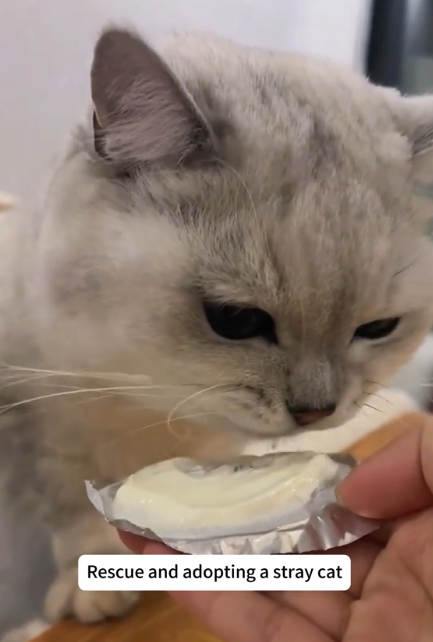
The Broader Impact
Rescuing and adopting a stray cat doesn’t just change the cat’s life—it changes yours, too. Misty brought joy, companionship, and a sense of purpose. She reminded me daily of the value of empathy, patience, and kindness. Her story also inspired friends and neighbors to consider adopting rather than buying pets.
More importantly, her presence encouraged me to support local animal shelters. I started volunteering on weekends, helping socialize cats and kittens to prepare them for adoption. I also began sharing Misty’s journey online, hoping to raise awareness about the importance of helping stray animals.
Things to Know Before Adopting a Stray Cat
If you’re thinking about rescuing and adopting a stray cat, here are a few important things to keep in mind:
- Be patient – Stray cats may have had traumatic experiences. They need time to feel safe and loved.
- Visit a vet – Health checks, vaccinations, and spaying/neutering are crucial.
- Create a safe space – Give the cat a quiet room to settle in when first brought home.
- Give consistent care – Routine feeding, gentle handling, and play will help build trust.
- Know the difference – A stray cat is different from a feral cat. Ferals are wild and may not adapt well to indoor life.
The Gift of Second Chances
Rescuing Misty wasn’t just about saving her. It was about giving her a second chance—a chance to live, love, and be loved. Every time she curls up beside me, every time she purrs in contentment, I’m reminded of how small acts of kindness can have a massive impact.
Misty’s journey from a soaked, frightened stray to a happy, healthy indoor cat is a testament to the power of compassion. Her rescue wasn’t dramatic or flashy—it was simple, quiet, and full of love. And in return, she gave me the gift of connection, companionship, and an endless source of joy.
If you ever see a stray cat lingering near your home or workplace, don’t ignore it. That little soul might be waiting for someone—someone like you—to notice, to care, and to offer a home. You won’t just be rescuing a cat; you’ll be gaining a friend.
